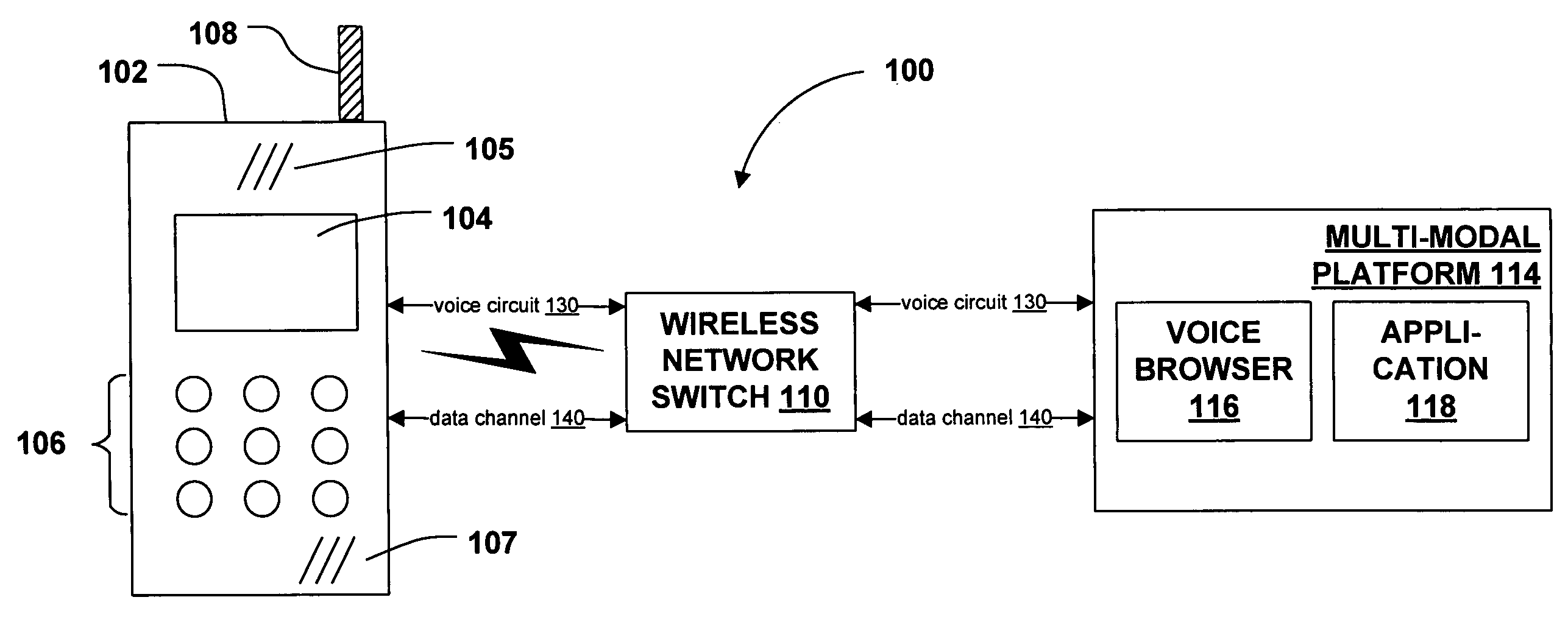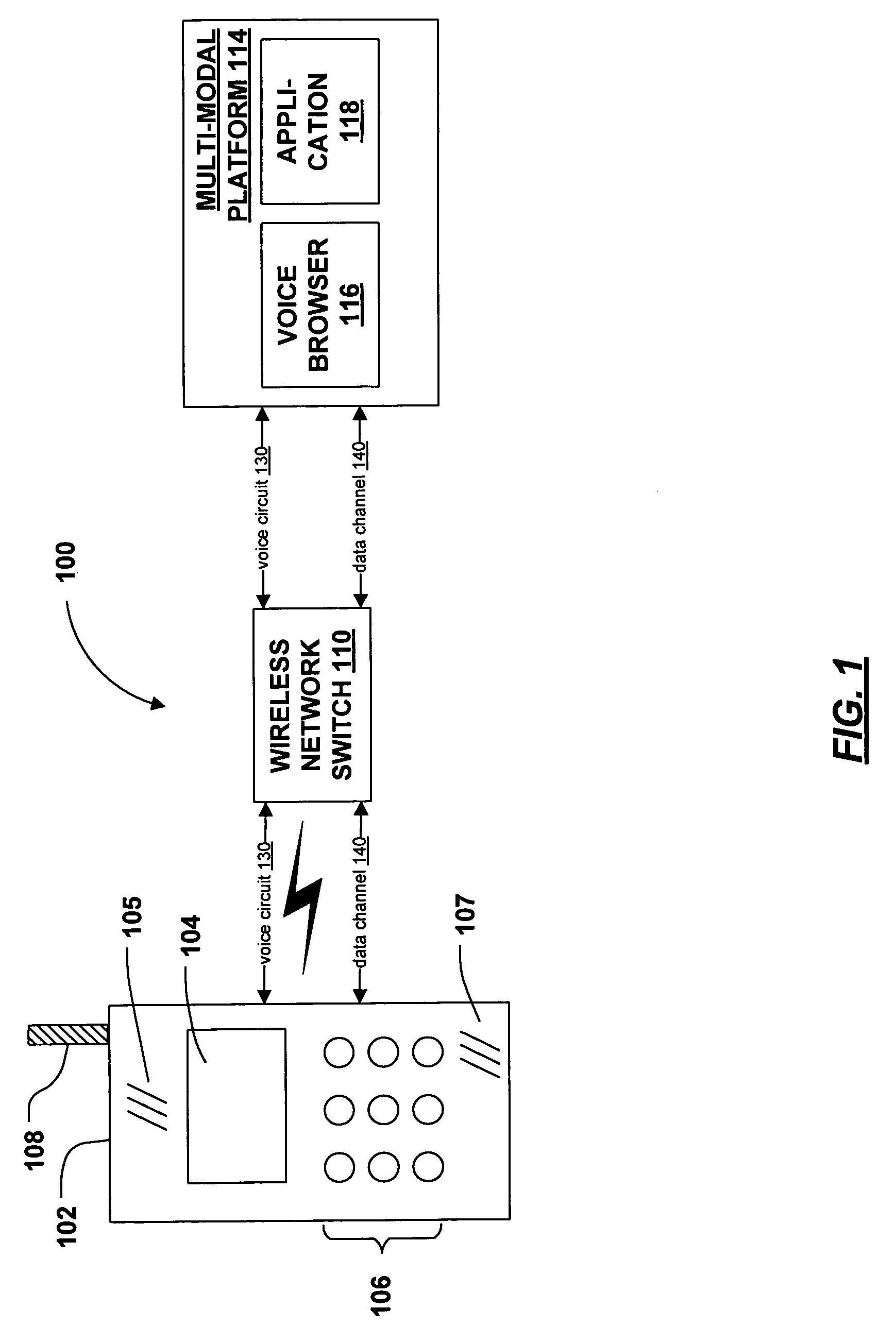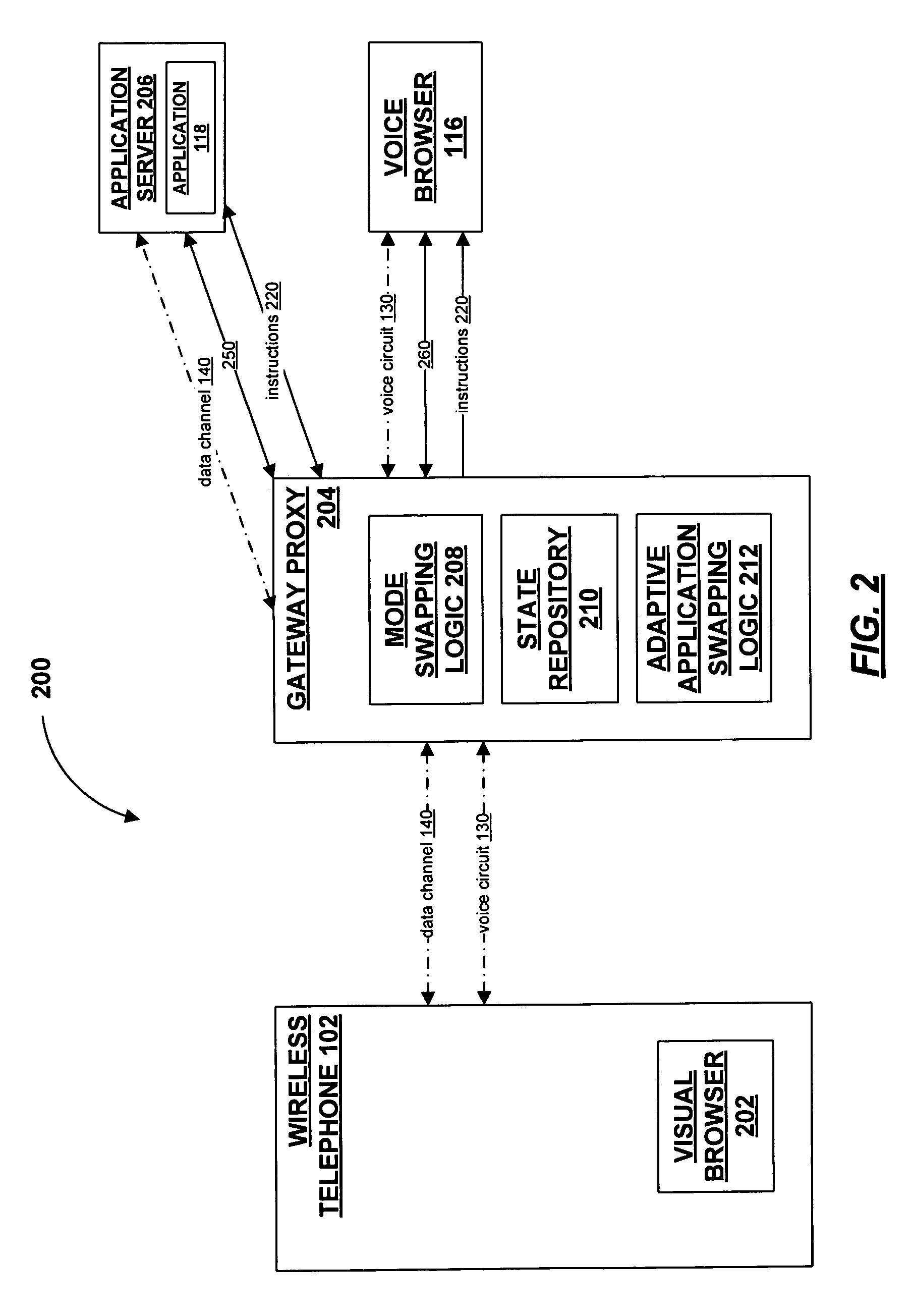Mode-swapping in multi-modal telephonic applications
a multi-modal telephonic and mode-swapping technology, applied in the field of telephone, can solve problems such as blurred distinction between computers and telephones
- Summary
- Abstract
- Description
- Claims
- Application Information
AI Technical Summary
Benefits of technology
Problems solved by technology
Method used
Image
Examples
Embodiment Construction
[0016]The present invention provides techniques for mode swapping, and an environment in which mode swapping may occur. In accordance with the invention, a user may interact with a software application (or other content provider) in various different “modes” (e.g., voice mode, data mode, etc.). During such interaction, the user may switch from one mode to another, or may drop or add a mode (in the case where it is possible to use more than one mode concurrently), while continuing to interact with the same content. The mode swap may be initiated by the user, by the application that provides the content, or by a separate component that mediates communication between the user and the application.
Overview of Telephony Architecture
[0017]FIG. 1 shows a telephone network architecture 100, in which aspects of the invention may be implemented or deployed. Architecture 100 includes a wireless telephone 102, a wireless network switch 110, and a multi-modal platform 114. While architecture 100 ...
PUM
 Login to View More
Login to View More Abstract
Description
Claims
Application Information
 Login to View More
Login to View More - R&D
- Intellectual Property
- Life Sciences
- Materials
- Tech Scout
- Unparalleled Data Quality
- Higher Quality Content
- 60% Fewer Hallucinations
Browse by: Latest US Patents, China's latest patents, Technical Efficacy Thesaurus, Application Domain, Technology Topic, Popular Technical Reports.
© 2025 PatSnap. All rights reserved.Legal|Privacy policy|Modern Slavery Act Transparency Statement|Sitemap|About US| Contact US: help@patsnap.com



